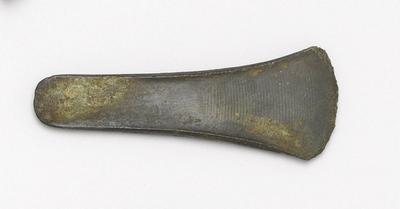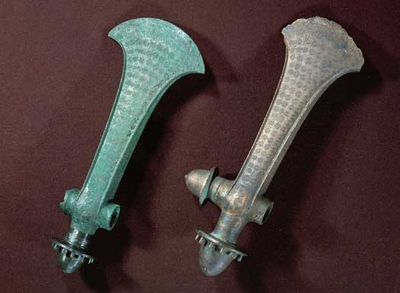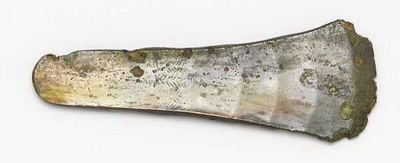Imported and domestic axes
The main part of the sacrificial find from Gallemose consists of bronze axes. A total of nine so-called low-flanged axes was found. The blade on one of the axes is spoon-shaped. This suggests that it was made in the central European area. Another axe is decorated with a ‘rain pattern’ that relates it to the British Isles. The identification of the place of production for the axes is also supported by chemical analyses of the composition of the metal. The remaining axes were probably produced by southern Scandinavian craftsmen and reflect the very earliest metal production in these parts. The axes therefore come from different places. Along with the chariot parts they are good examples of the extensive contacts with areas beyond Denmark at the end of the Stone Age.




